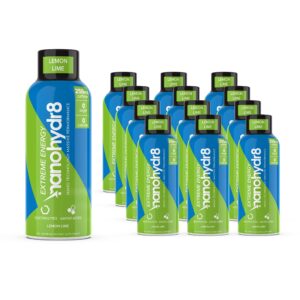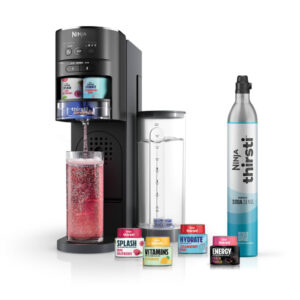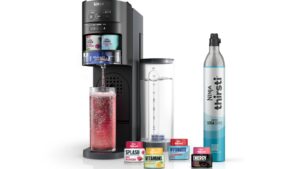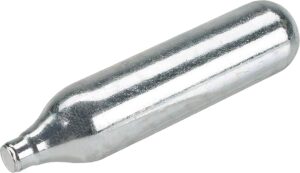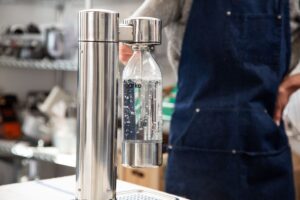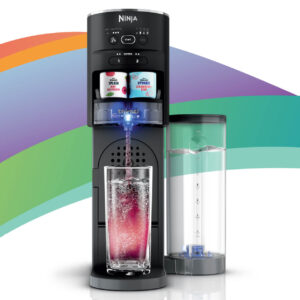
In this article, you will learn about the fascinating science behind CO2 drink systems and how they create that delightful fizz in your beverages. We will explore the role of carbon dioxide, the process of carbonation, and the impact it has on the taste and texture of your favorite drinks. Additionally, we will discuss the various methods and equipment used to infuse drinks with CO2, and how this technology has evolved over time. Join us as we unravel the secrets behind the magical fizz in your glass!

What is CO2 Drink Systems?
Definition of CO2 Drink Systems
CO2 drink systems, also known as carbon dioxide drink systems or carbonation systems, are devices that infuse beverages with carbon dioxide (CO2) to create fizz or carbonation. These systems are commonly used in the production of carbonated drinks such as soda, sparkling water, and beer.
Components of CO2 Drink Systems
CO2 drink systems consist of several key components that work together to produce carbonation. These components include:
-
CO2 Cylinder: This is a pressurized cylinder that contains carbon dioxide gas.
-
Regulator: The regulator is responsible for controlling the flow and pressure of carbon dioxide from the cylinder into the drink.
-
Carbonator: The carbonator is a device that mixes carbon dioxide with the liquid to create carbonation.
-
Dispensing System: This includes various valves, tubing, and faucets that allow the carbonated drink to be dispensed.
How Does CO2 Create Fizz?
The Role of CO2 in Fizz Formation
CO2 plays a crucial role in creating fizz in carbonated drinks. When carbon dioxide gas is dissolved in a liquid, it forms carbonic acid. This acid gives the drink a slightly tangy taste and triggers the release of carbon dioxide bubbles, leading to the characteristic fizzy sensation.
Chemical Reaction of CO2 and Liquid
The process of carbonation involves a chemical reaction between carbon dioxide and the liquid. When carbon dioxide is introduced into the liquid, it dissolves and forms carbonic acid (H2CO3), which is a weak acid. The carbonic acid then breaks down into bicarbonate ions (HCO3-) and hydrogen ions (H+). The release of hydrogen ions creates a slightly acidic environment, which enhances the flavor and tartness of the drink.
Factors Affecting Fizz Formation
Several factors can affect the formation of fizz in carbonated drinks. These include:
-
Pressure: Higher pressure allows more carbon dioxide to dissolve in the liquid, resulting in a greater amount of fizz.
-
Temperature: Lower temperatures increase the solubility of carbon dioxide in liquids, leading to enhanced fizz formation. Warmer temperatures, on the other hand, promote the escape of carbon dioxide bubbles, resulting in reduced carbonation.
-
Surface Area: Increasing the surface area of the liquid by creating small bubbles or agitation can help facilitate the absorption of carbon dioxide and enhance fizz formation.
Understanding the Magic of CO2
The Science Behind Carbonation
Carbonation is a fascinating scientific process that relies on the solubility of carbon dioxide in liquids. When carbon dioxide is under high pressure, it readily dissolves in the liquid, forming carbonic acid. This process is reversible, meaning that carbonic acid can release carbon dioxide gas when pressure is reduced, giving rise to the characteristic fizz in carbonated drinks.
Carbonation Techniques Used in CO2 Drink Systems
CO2 drink systems utilize various techniques to carbonate beverages. The most common methods include:
-
Counter-Pressure Carbonation: This technique involves injecting carbon dioxide into a sealed container filled with liquid under high pressure. The pressure forces the carbon dioxide to dissolve in the liquid, resulting in carbonation.
-
Forced Carbonation: In this method, carbon dioxide is added directly to the liquid using a carbonator or carbonation stone. The liquid and carbon dioxide are mixed together, allowing the gas to dissolve and carbonate the drink.
-
Natural Carbonation: Some drinks, such as traditional beer or champagne, undergo a natural carbonation process. This occurs when yeast ferments sugars in the liquid, producing carbon dioxide as a byproduct. The carbon dioxide is trapped in the drink, creating carbonation.
The Importance of Pressurization
The Purpose of Pressurization in CO2 Drink Systems
Pressurization is a key aspect of CO2 drink systems as it allows carbon dioxide gas to dissolve in the liquid, resulting in carbonation. Without pressurization, the carbon dioxide would escape from the liquid, leading to a flat and non-fizzy drink.
Pressurization Methods in CO2 Drink Systems
CO2 drink systems use different methods to achieve pressurization. The most common methods include:
-
CO2 Cylinder: The carbon dioxide gas is stored in a pressurized cylinder, which is connected to the drink system. The pressure from the cylinder forces the gas into the liquid, leading to carbonation.
-
Carbonator Pump: Some CO2 systems use a carbonator pump, which pressurizes the liquid and carbon dioxide mixture. The pump applies pressure to the liquid, allowing the carbon dioxide to dissolve and carbonate the drink.

Exploring Different CO2 Drink Systems
Soda Machines
Soda machines, also known as soda fountains or post-mix dispensers, are commonly found in restaurants, fast-food chains, and convenience stores. These machines use CO2 drink systems to mix carbonated water with flavored syrup to create various sodas. The carbonation is achieved by injecting carbon dioxide into the water, resulting in fizzy beverages.
Sparkling Water Makers
Sparkling water makers are consumer-grade CO2 drink systems that allow individuals to create their own carbonated water at home. These devices typically consist of a small carbonator cylinder and a bottle. By pressing a button, carbon dioxide is added to the water in the bottle, creating sparkling or fizzy water.
Beer Dispensing Systems
Beer dispensing systems, such as draft systems or kegerators, often utilize CO2 drink systems to carbonate and dispense beer. The carbonation process in beer involves adding carbon dioxide to fermented beer, creating the desired level of carbonation. The beer is then dispensed through taps, allowing for a refreshing and fizzy pour.
CO2 Safety Measures
Handling and Storage of CO2
CO2 should be handled and stored with caution due to its potential hazards. The following safety measures should be observed:
-
Proper Ventilation: CO2 can displace oxygen in confined spaces, leading to asphyxiation. Ensure that areas where CO2 is stored or used are well-ventilated to prevent the accumulation of gas.
-
Secure Storage: CO2 cylinders should be stored in a cool, dry, and well-ventilated area away from sources of heat, flames, or potential ignition sources.
-
Proper Handling: Always handle CO2 cylinders with care, ensuring that they are not dropped or subjected to rough handling. Avoid tampering with the cylinders or attempting to refill them without proper training.
CO2 Safety Regulations
There are specific regulations and guidelines in place to ensure the safe handling and use of CO2 in drink systems. These regulations may vary depending on the jurisdiction and industry. It is important to familiarize yourself with the appropriate safety guidelines and comply with any regulatory requirements.

The Impact on Taste
Effect of CO2 on Flavor
Carbonation plays a significant role in enhancing the flavor of many beverages. Carbon dioxide adds a refreshing and tangy taste to drinks, making them more enjoyable and satisfying. The presence of carbonation can also help balance sweetness or acidity in certain beverages, creating a more harmonious flavor profile.
Adjusting CO2 Levels for Different Drinks
Different beverages require varying levels of carbonation to achieve the desired taste. For example, lightly carbonated drinks, such as some sparkling waters, may have lower CO2 levels to maintain a subtle fizz. On the other hand, highly carbonated beverages, like soda or champagne, require higher CO2 levels to create a more pronounced and effervescent effect. Adjustments to the CO2 levels can be made in CO2 drink systems to meet the specific preferences for each type of drink.
Maintenance and Troubleshooting
Cleaning and Maintenance of CO2 Drink Systems
Regular cleaning and maintenance of CO2 drink systems are essential to ensure optimal performance and hygiene. The following steps can help maintain the system:
-
Proper Cleaning: Follow the manufacturer’s instructions to clean the various components of the drink system, including the carbonator, valves, tubing, and dispensing nozzles.
-
Sanitization: Use appropriate sanitizers to disinfect the drink system, preventing the growth of bacteria or molds that can affect the quality of the beverages.
-
Maintenance Checks: Regularly inspect the system for any leaks, worn-out parts, or signs of damage. Replace any faulty components promptly to prevent issues with carbonation or dispensing.
Common Issues and Troubleshooting Tips
CO2 drink systems may encounter certain issues that can affect the carbonation process or the quality of the drinks. Some common issues and troubleshooting tips include:
-
Flat Drinks: If the drink lacks fizz, check the CO2 cylinder for proper pressure and ensure that the carbonator is functioning correctly.
-
Excessive Foam: If the drink is excessively foamy, it may indicate a higher carbonation level than desired. Adjust the CO2 levels or reduce the flow rate to decrease foaminess.
-
Off-Taste or Odor: Unusual tastes or odors in the drinks may be a sign of contamination or improper cleaning. Thoroughly clean and sanitize the drink system to eliminate any issues.

Environmental Impact
CO2 Emissions and Climate Change
The use of CO2 drink systems contributes to the emission of carbon dioxide, a greenhouse gas that is linked to climate change. The production and transportation of carbon dioxide gas, as well as the energy consumption associated with CO2 drink systems, can have an environmental impact.
Sustainable Alternatives to CO2 Drink Systems
Efforts are being made to reduce the environmental footprint of CO2 drink systems. Some sustainable alternatives to traditional CO2 systems include:
-
Infused Water: Instead of carbonated drinks, infused water can provide a refreshing and flavorful alternative. By adding fruits, herbs, or vegetables to water, you can create a natural and low-carbon beverage.
-
Beverage Dispensers: Dispensers that serve non-carbonated drinks, such as fruit juices or iced tea, can be an eco-friendly option. These dispensers eliminate the need for carbonation, reducing the carbon footprint associated with CO2 drink systems.
Conclusion
CO2 drink systems are fascinating devices that harness the science of carbonation to create fizzy and refreshing beverages. Understanding the role of carbon dioxide, the chemical reactions involved, and the various components of these systems can help us appreciate the magic behind the creation of fizzy drinks. Whether it’s enjoying a soda, sipping on sparkling water, or indulging in a perfectly carbonated beer, the science of fizz adds an extra element of enjoyment to our favorite beverages. So, next time you take a sip, remember the carbonation process that went into making your drink fizzy and experience the magic of CO2 drink systems.



